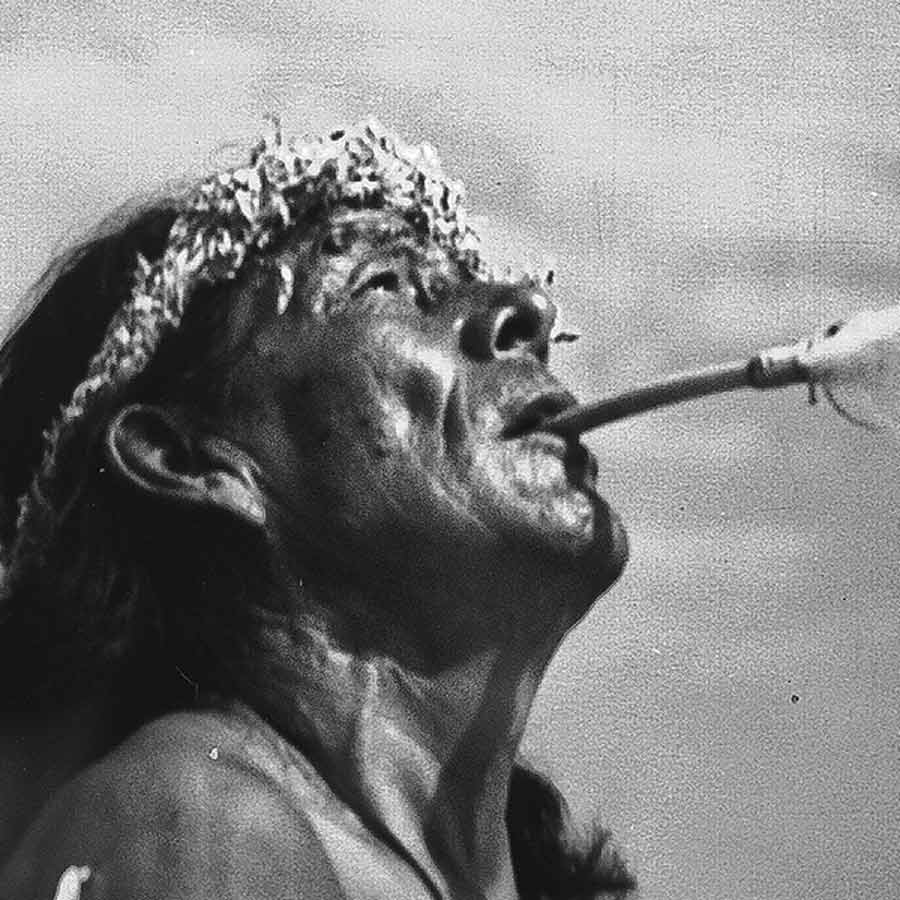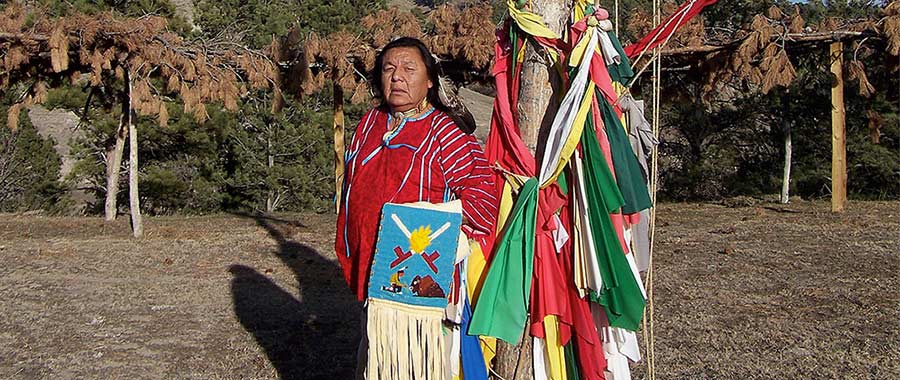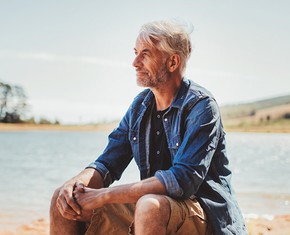The views expressed in our content reflect individual perspectives and do not represent the authoritative views of the Baha'i Faith.
Several years ago I introduced a traditional Oglala Lakota medicine man to a few hundred doctors from the Western medical tradition.
This highly unusual meeting between disparate cultures happened because my Baha’i friend Cindy Catches lives on the Pine Ridge Lakota reservation with her husband Zintkala Oyate, also known as Peter Catches, a 38th-generation medicine man from what some call the Sioux tribe. Peter and I were talking one day, and I asked him if he could tell me something about the Lakota way of healing.

Peter S. Catches (Sr.)
Peter showed me a book he and his father wrote called Oceti Wakan—which means, roughly translated, the Sacred Fireplace—and explained some of the fundamentals of the Lakota philosophy of health and well-being. (www.ocetiwakan.org)
Have you ever had one of those moments when your understanding of how things actually work gets completely upended?
Well that happened to me while I was talking to Peter. His explanations about how the health of individuals related directly to the health of the larger community struck me as truly profound, and very, very different from the way our contemporary Western culture views the whole subject area of health, disease and how to stay healthy. Learning a little bit about the Lakota way of healing opened up a whole new range of possibilities for me, re-defining much of what I had previously thought about health.
So I asked Peter if he would consider traveling to Los Angeles to speak to the academic medical staff and residents at UCLA Medical Center and Medical School, where I worked at the time. He agreed, and a few months later he stood in front of several hundred physicians trained in the tradition of Western medicine and spent an hour explaining the Seven Sacred Rites of the Lakota from the Spotted Eagle View. The audience listened raptly and respectfully, honoring the long tradition Peter had descended from and the accumulated wisdom of thirty-eight generations.
Of course, in an hour Peter could only lightly touch on some of the major aspects of that wisdom. I’d recommend, if you’re interested in the details of the Lakota way of healing, that you pick up Peter’s book and read it carefully.
But I will offer you, from my limited understanding, one fundamental difference between the two healing traditions: in the West, we try to treat the body of the individual person and their specific disease. A Lakota medicine man takes a different approach: he tries to heal the spirit of the tribe itself. Western medicine focuses on a single body; and the Oglala Lakota tradition focuses on the whole body of the community. If the community is healthy, in other words, so are the individuals who live in it. If the community thrives, so do its members.
This radically different view of health emphasizes the whole rather than the part and values the macro over the micro. It views the group—the family, the tribe, the community—as one unified organism, exactly like modern science has recently come to view the ecosphere and its linked interdependence.
From this philosophical point of view, when an individual loses the balance and harmony that characterizes a healthy part of the unit, then the treatment involves restoring lost harmony to the entire group. So for a Lakota medicine man, true healing comes about through prayer, song and a full restoration of spiritual balance to the entire community.
Does that approach sound familiar in any western context? It did to me. After Peter’s talk, I realized that the Lakota model of a healthy community preceded and now reflects the Western practices of modern Public Health—which also emphasizes the total well-being of an entire community and the wholesale prevention rather than the singular treatment of disease.
Public Health schools throughout the Western world stress the shared environmental elements of life that allow large groups of people to stay healthy: clean water, a thriving ecosystem, the provision of nourishing food and the eradication of major threats to a community’s well-being like violence, endemic poverty, and drugs and alcohol.
In many ways, the Baha’i teachings present the same message to humanity, saying that only unity can heal the global community of its myriad ills:
That which the Lord hath ordained as the sovereign remedy and mightiest instrument for the healing of all the world is the union of all its peoples in one universal Cause, one common Faith. This can in no wise be achieved except through the power of a skilled, an all powerful and inspired Physician. – Baha’u’llah, Tablet to Queen Victoria, quoted by Shoghi Effendi in World Order of Baha’u’llah, pp. 39-40.
The Baha’i teachings offer humanity a prescription for the well-being and wholeness of the entire world. Those teachings recognize not only the physical health of the individual body, but the collective health of the global body of humanity. They incorporate both the material and the mystical, uniting the scientific and the spiritual:
There are two ways of healing sickness, material means and spiritual means. The first is by the treatment of physicians; the second consisteth in prayers offered by the spiritual ones to God and in turning to Him. Both means should be used and practised.
Illnesses which occur by reason of physical causes should be treated by doctors with medical remedies; those which are due to spiritual causes disappear through spiritual means. Thus an illness caused by affliction, fear, nervous impressions, will be healed more effectively by spiritual rather than by physical treatment. Hence, both kinds of treatment should be followed; they are not contradictory. Therefore thou shouldst also accept physical remedies inasmuch as these too have come from the mercy and favour of God, Who hath revealed and made manifest medical science so that His servants may profit from this kind of treatment also. Thou shouldst give equal attention to spiritual treatments, for they produce marvellous effects.
Now, if thou wishest to know the true remedy which will heal man from all sickness and will give him the health of the divine kingdom, know that it is the precepts and teachings of God. Focus thine attention upon them. – Abdu’l-Baha, Selections from the Writings of Abdu’l-Baha, pp. 151-152.
You May Also Like
Comments

















Thank you David, I always enjoy your articles.